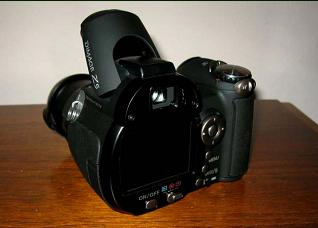Recently I was asked to make a recommendation on the best all around digicam for general use by someone who is not a photographer but wants a camera to do everything well and not be disappointed with the capabilities on a trip or when they want a little more than a snapshot.
I have focused attention on cameras with 8x or larger zooms. I decided this because the zoom lens becomes the necessary tool in many instances, and often gives a greater sense of photographic achievement, due, in part, to the dramatic nature of close-ups. I have left pocket cameras out because to be capable of more than snapshots cameras with larger zooms have much more versatility and are capable enough to shoot nature and wildlife. Many of these cameras have the equivalent of a 35-300mm zoom range in 35mm terms.
This is a review by comparison. I looked at the available cameras and chose the Z5 and the
Kodak Z740, to purchase and try out. A number of others either were ruled out, with in the store testing, or were not available to see, or purchase. I have also kept the price to those lower than $450


